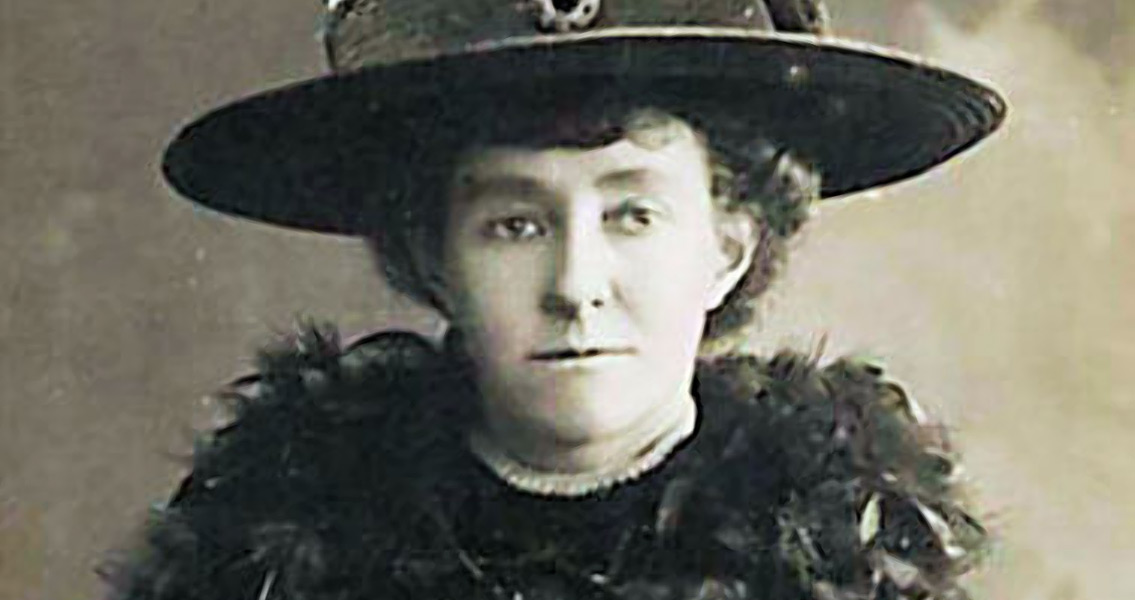<![CDATA[It is impossible to know what was going through Emily Wilding Davison's mind on 4th June 1913, the day the suffragette was trampled under the hooves of the king's horse, Anmer, at the Epsom Derby. With the race in full flow Davison ducked under the railings separating spectators from the track, and strode into the path of the oncoming horses. As Anmer, running third from last, approached, the suffragette raised her hands to her face. Seconds later the horse collided with Davison at full speed, the brunt of the impact seeming to strike the forty-one year old woman in the face. Davison immediately fell in a crumpled heap, as did the horse. The jockey, Herbert Jones, was thrown to the ground several feet away. The entire horrifying spectacle was witnessed by King George V and Queen Mary, sitting in the royal box, and was filmed on newsreel. Gravely injured, Davison would never regain consciousness. Taken to a nearby hospital, she died four days later. The event sent shockwaves across Great Britain. For some, Davison's harrowing death highlighted the increasingly dangerous and irrational tactics being carried out by the suffragette movement. Many newspapers labelled her actions those of a madwoman or dangerous anarchist, but in the suffragette press she was hailed a martyr, her death a symbol of the long, exhausting fight for gender equality in the United Kingdom. Supporters of the Votes for Women Campaign turned out in their thousands for Davison's funeral procession. She was laid to rest in Morpeth, Northumberland, her gravestone read "Deeds not words", the motto of the Women's Social and Political Union. A long term, militant suffragette, it is still far from clear if Davison's death was truly an act of conscious self sacrifice for the cause. Did she intend to commit suicide, or was it a tragic accident? Emmeline Pankhurst wrote in her autobiography that she believed Davison intended to martyr herself. "Emily Davison clung to her conviction that one great tragedy, the deliberate throwing into the breach of a human life, would put an end to the intolerable torture of women. And so she threw herself at the King's horse, in full view of the King and Queen and a great multitude of their Majesties' subjects." Others point out that during one of several incarcerations at Holloway women's prison, Davison had hurled herself over a balcony designed specifically to stop inmate suicides. Previously she had jumped down an iron staircase, suffering severe spinal injuries in an attempt to draw attention to the suffragette movement. These events in her life lead some historians to conclude that she had intended to provide the suffragettes a martyr in June 1913. Born in 1872, Davison studied at Royal Holloway College and Oxford University, although institutionalised sexism meant women were banned from taking degrees at the time. She was a member of Pankhurst's Women's Social and Political Union from 1906, and gave up her job as a teacher in 1909 to devote herself full time to the suffragette movement. In the early twentieth century growing frustration at the British government's continued refusal to listen to the suffragette's calls for the vote, combined with the increasingly heavy handed tactics employed by the authorities to bring the movement under control, pushed many women into increasingly aggressive action. Davison was at the forefront of this, arrested several times for acts ranging from causing public disturbances to setting fire to post boxes. In 1909 she was sentenced to a month's hard labour for having thrown bricks at David Lloyd George's carriage. She went on hunger strike, refusing to eat and blockading herself in her cell. Prison guards attempted to force her out by flooding the cell, eventually leading to her suing the prison for damages. She continued at the forefront of the militant campaign, and was once again imprisoned for a month in 1911. Davison undoubtedly had a ferocious dedication to the suffragette cause, but that doesn't prove that she deliberately sacrificed her life for it. She had bought a return ticket to Epsom - suggesting she at least intended to make the journey home. Some suggest her death was a horrendous miscalculation. Clearly she wanted to disrupt the race but it's argued that her position, on a blind bend on the course, meant she thought all of the horses had passed when she walked out on to the track. In 2013, a Channel 4 documentary claimed that Davison's intention had been to attach a scarf to the king's horse rather than knock it to the floor. The makers of the documentary used extensive analysis of the newsreel footage to argue that in reality she had not intended to place herself in the horse's path. Some historians have claimed that suffragettes were seen practicing pulling down horses in a park near Davison's house. Although adding weight to the idea she had intended to tackle the king's horse, it still doesn't prove that she deliberately martyred herself. We'll never know what Davison intended to do on that fateful day in 1913, whether she committed suicide to draw attention to her cause, or was the victim of misfortune or miscalculation. What is clear however, beyond the debate over her intentions, is that her death highlighted the extreme measures suffragettes had been pushed to. It's sometimes hard to believe that less than a century ago women didn't have the vote in Great Britain. Whatever her motives, Davison's death is an important symbol of the painful sacrifices made in the pursuit of equality. ]]>
The Mystery Behind Emily Davison's Death
